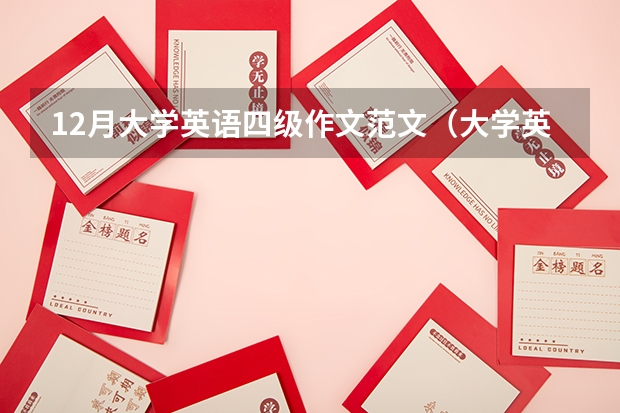帮我写一篇有关河南的英语作文,谢谢 介绍河南的英语作文
2024-08-05 06:15:30 | 炎炎英文培训网
本文目录一览:

帮我写一篇有关河南的英语作文,谢谢
Henan province in china, the lower and middle eastern department, because in kyushu, we have a "central" and "中州". the capital 郑州市 is the chinese integrated transport hub. the south is the culture of the cradles. history has had more than 20 dynasty in the 建都, the territory of the famous ancient luoyang, kaifeng and anyang, all of the seven ancient china: henan province has remained at the national political, economic and cultural areas occupy the important position. a prosperous economy and the brilliant culture to the left a rich cultural 史迹 for developing tourism and cultural, religious, sightseeing, etc. provide the rich resources, such as tatsukado grottoes, the white horse temple and shaolin temple and nakano-dake suseyama, 宋陵, etc.文中的中文改成拼音

介绍河南的英语作文
Luoyang has rich historical and cultural sites. The Longmen Grottoes are one of China's three most precious treasure houses of stone sculptures and inscriptions. The White Horse Temple is the first Buddhist temple and is honored as the 'Cradle of Buddhism in China'. Mt. Mangshan is where ancient tombs of emperors, nobles and literates in the past dynasties collected. The Luoyang Ancient Tombs Museum is the world's first example of the kind and presents thousands of treasures discovered in the tombs. Shaolin Temple is the place of origin for Chinese Zen Buddhism and the cradle of Chinese Martial Art. Landscapes in Luoyang hold the same attraction as the cultural sites. White Cloud Mountain, Funiu Mountain, Long Yu Wan National Forest Park, Ji Guan Limestone Cave and the Yellow River Xiaolangdi Scenic Area are all worth a visit. Additionally, Luoyang is particularly well known for its peonies. Every year in April, the flowers blossom and attract tourists from all over the world.介绍河南的英语作文
Henan is a province of the People's Republic of China, located in the central part of the country. Its one-character abbreviation is yu, named after Yuzhou Province , a Han Dynasty province (zhou) that included parts of Henan. The name Henan means "south of the Yellow River"With nearly 100 million people, Henan is the most populous province of China by residency. It borders Hebei to the north, Shandong to the northeast, Anhui to the southeast, Hubei to the south, Shaanxi to the west, and Shanxi to the northwest.
Henan is often called Zhongyuan or Zhongzhou ,literally "central plains" or "midland"; this name is also broadly applied to the entire North China Plain. Henan is traditionally regarded as the cradle of Chinese civilization.
Northern Henan, along the Yellow River, was the core area of ancient China for at least the first half of Chinese history. The two cities of Luoyang and Kaifeng each served as the capital city of a long list of dynasties.
Archaeological sites reveal that prehistoric cultures such as the Yangshao Culture and Longshan Culture were active in what is now northern Henan. The Erlitou culture, which has been controversially identified with the Xia Dynasty, the first Chinese dynasty as described in Chinese records, was also centered in Henan.
The first literate dynasty of China, the Shang Dynasty (16th-11th century BC), was centered in Henan. Their last capital, Yin, was located at the modern city of Anyang, Henan.
Henan is flat in the east and mountainous in the west and extreme south. The eastern and central parts of the province form part of the North China Plain. To the northwest the Taihang Mountains intrude partially into Henan's borders; to the west the Qinling Mountains enter Henan from the west and end about halfway across Henan, with branches (such as the Funiu Mountains) extending northwards and southwards. To the far south, the Dabie Mountains separate Henan from neighbouring Hubei province.
The Yellow River passes through northern Henan. It enters from the northwest, via the Sanmenxia Reservoir. After it passes Luoyang, the Yellow River is raised via natural sedimentation and artificial construction onto a levee, higher than the surrounding land. From here onwards, the Yellow River divides the Hai He watershed to the north and the Huai He watershed to the south. The Huai He itself originates in southern Henan. The southwestern corner of Henan, around Nanyang, is part of the drainage basin of the Han Shui River across the border in Hubei.
There are many reservoirs in Henan. Major ones include the Danjiangkou Reservoir on the border with Hubei, the Sanmenxia Reservoir, the Suyahu Reservoir, the Baiguishan Reservoir, the Nanwan Reservoir, and the Banqiao Reservoir.
Henan has a temperate continental climate, with most rainfall in summer. Temperatures average about 0°C in January, and 27 to 28°C in July.
Zhengzhou is the province's capital and most populous city. Other major cities include Kaifeng, Luoyang, Xinxiang, Anyang, Luohe, and Xuchang.
Henan is the most populous province of China, with a population of 98,690,000 in 2004. If it were its own country, it would be the twelfth most populous, just behind Mexico. However, Sichuan used to be more populous before Chongqing city was carved out of it. Also, when considering migrants, Guangdong has the highest population in China, despite Hainan being splintered off of it.
Just under 99% of Henan's population is Han Chinese, while Hui account for virtually all the remaining 1%. It is the third most populous sub-national division in the world, after Uttar Pradesh and Maharashtra of India.
Although in absolute terms, Henan's GDP ranks fifth in the country, it is a relatively poor province and given its large population of almost 100 million people, its GDP per capita is only US$2,820. Since undergoing reforms, however, the speed of economic development has increased by an average of about 10% each year for the past twenty years. In 2008, Henan's nominal GDP was 1.84 trillion RMB (US$265 billion), a year-on-year rise of 12.1%. In 2008, Henan's primary, secondary, and tertiary industries were worth 265.9 billion RMB (US$38 billion), 1.048 trillion RMB (US$151 billion), and 527.1 billion RMB (US$76 billion), respectively. Its per capita GDP reached 19,593 RMB (US$2,820) in 2008 . An industrial system of light textiles, food, metallurgy, petrol, building materials, chemical industry, machinery and electronics has been formed. Nearly one hundred products, such as coal, industrial cord fabrics, fridges, aluminium, color glass cases, gold, meat products, tires, chemical fibers, glass, cement, generated energy, and others are an important part of the national market. Industrial sales reached 2.53 trillion RMB in 2008. 以上就是炎炎英文培训网小编整理的内容,想要了解更多相关资讯内容敬请关注炎炎英文培训网。
免责声明:文章内容来自网络,如有侵权请及时联系删除。

介绍河南的英语作文Luoyanghasrichhistoricalandculturalsites.TheLongmenGrottoesareoneofChina'sthreemostprecioustreasurehousesofstonesculpturesandinscriptions.TheWhiteHorseTempleisthefirstBuddhisttempleandisho

河南的四季的英语作文Myhometownisinzhenzhoucitychina,Therearealotofpeoplelivehere,It'safamouscity.Thepeopleareveryfriendly.Theclimatehereisverypleasant.Myhometownhasdifferentseasons,spring.summer.autumnandw

英语作文自我介绍带翻译谢谢hello,everyone.(大家好).verygladtobehere.(非常高兴能来到这里给大家发言)mynameis###,andiam**yearsold.(我的名字是###,今年××岁了)nowiama___schoolstudent.(我现在是一名……学生)myfavouritesubjectisEnglish.andilikesportsverymu

帮忙写2篇英语作文一篇关于春晚的还有一篇过年的谢了带上翻译100字的春晚是否应该举办,春晚之我见:Inthepastfewyears,moreandmorepeopleliketowatchtheSpring-FestEveningPartyinthelastdayofoneyear.Itseemsthatbecamethemostimportantpartintheirlives.B

春晚英语作文TheSpringFestivalisatraditionalfestivalforallChinesepeople;onthateveningthereisaverytraditionalceremony----SpringFestivalGala,whichisthefavoriteformanypeople.ItbringssomuchhappinesstoChinesea

英语四级写作范文我找了些四级作文模板一.对比选择型热点追踪StudyAbroadorinChina?Thereisnoconsensusofopinionsamongpeopleastowhetherstudentsshouldstudyabroadornot.Somepeopleareoftheviewthattheyouthsshouldgooverseasforfurthe

求以我的家乡之旅为题的英语作文要求是十句话。我的家乡是天津。谢谢大神MyhometownisTianjinMyhometownisTianjin,China,anoldcitywithrichculture,oneofthemainportsinChina.TherearelotsofEuropean-stylehousesinTianjin,andthecityiswell-kn

介绍云南的英语作文无论是在学校还是在社会中,大家最不陌生的就是作文了吧,作文根据体裁的不同可以分为记叙文、说明文、应用文、议论文。那么一般作文是怎么写的呢?下面是我帮大家整理的介绍云南的英语作文,供大家参考借鉴,希望可以帮助到有需要的朋友。介绍云南的英语作文篇1Minority:YunnanisChina'smostminorityprovinces,besidesHan,is
- 坚持朗读十分钟语文作文会提高吗
- 帮我写一篇有关河南的英语作文,谢谢 介绍河南的英语作文
- 急 求一篇英语作文 关于师生诗歌朗诵比赛的 100词左右...(假如你是李华,你校干11月15日举行诗歌朗诵比赛,拟一份通知 英语作文)
- 四级英语推荐作文范文模板 四级作文万能模板
- 描述地点四级作文范文大全 四级作文范文:中国的名胜古迹作文
- 一篇英语作文:根据新闻报道,每年全国在餐馆里被倒掉的食物估计可养活2亿人。中国开展了“光盘”运动。(当你听到一件大新闻时的英语作文)
- 英语基础差,如何准备大学英语四级考试?
- 英语四级提示作文范文 英语四级优秀作文范文
- 雅思应如何复习??尤其是写作和口语???我的水平很差,才过四级,六月底就要考了!!
- 大学英语四级作文优秀模板总结 大学英语四级作文万能模板积累
- 我想对你说作文书信格式500字(我想对你说作文500字书信格式)
- 150字英语作文(有关成功的英语作文150字)
-
 12月英语四级作文三篇精选:家乡 四级真题作文范文
12月英语四级作文三篇精选:家乡 四级真题作文范文2024-06-19 11:16:40
-
 美术英语作文四级范文 我爱美术课英语作文
美术英语作文四级范文 我爱美术课英语作文2024-06-10 13:53:30
-
 英语四六级报名时间2023年下半年(每年四六级报名时间)
英语四六级报名时间2023年下半年(每年四六级报名时间)2024-04-26 11:50:57
-
 12月大学英语四级作文范文(大学英语四级作文范文10篇)
12月大学英语四级作文范文(大学英语四级作文范文10篇)2024-06-08 18:54:39
-
 特岗报名截止时间2023 2023年特岗考试时间
特岗报名截止时间2023 2023年特岗考试时间2024-04-05 21:54:09
-
 大学考试英语四级听力原题 大学英语四级考试听力真题原文
大学考试英语四级听力原题 大学英语四级考试听力真题原文2023-09-19 17:57:39
